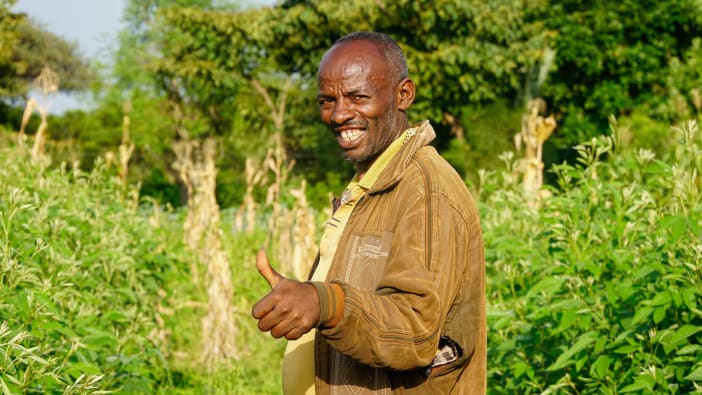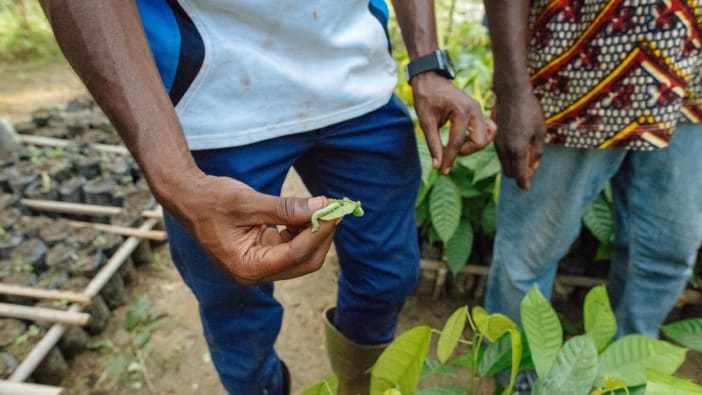The term “agroforestry” has been widely used for 10 or 15 years. It involves growing trees together with crops and sometimes livestock on the same land.
Theres nothing new, you may say, in growing trees and producing food together. You would be right. It’s a new name for an old practice. Many people, particularly in warm climates, have practiced this sort of farming for generations. Today scientists have realised that agroforestry systems are very efficient.
Generally they are…
- more productive, in food or income
- more dependable with less risk of failure
- more sustainable, continuing to yield in the long-term.
Why is agroforestry efficient?
1. The land is farmed in many layers. For example, if maize and beans are planted among trees, some products grow near the ground, others grow higher up. Climbers, like passion fruit, may go from one later to another. Beans and maize have shallow roots, taking their water and nutrients from near the soil surface, while the tree roots draw their water and nutrients from deeper in the soil. All this makes for an efficient use of light, space and other resources.
2. The land receives long-term protection from wind and water erosion. This is particularly important during the dry season when there may be little soil cover from annual plants.
3. An agroforestry system tries to copy the natural vegetation. Several different crops and trees are grown, not just one. Crop wastes, animal manures, leaves, green manures and any other organic matter are returned to the soil for recycling.
Many systems of agroforestry occur. Mature trees are left or young ones planted in crop fields. Acacia and Prosopis trees are commonly used for this, e.g. Acacia albida and Prosopis juiliflora. But there are hundreds of others. Local trees are usually best. Look to see which local trees allow crops to grow well nearby.
Alley cropping
Another system of agroforestry that is being tried widely in many countries is known as “alley cropping”.
Lines of trees are planted closely in double-rows or hedges, perhaps 5m apart. If the land is sloping, the lines follow the contour. Once the trees are established, they are cut back regularly and the leafy material is placed on the soil of the “alleys” in between the lines of trees. Annual crops can be planted in the alleys. They benefit from the organic matter and plant foods released as the leafy material rots as a “green manure”. The green manure protects the soil from heavy rainfall. It acts as a mulch reducing weed growth and soil temperature. It also helps the soil to store water and reduces the need for ploughing or cultivating.
The trees used in alley cropping will generally be legumes, which help improve the soil by adding nitrogen. They need to be fast growing, multi-purpose trees with a deep root system that will not compete with the crop roots. Local trees may be useful. Sometimes trees from other countries can be grown. These are called exotic trees. Some useful species for alley cropping are Gliricidia sepium, Calliandra callothyrsus, Leucaena leucocephala and Sesbania sesban. As well as being legumes, all these can provide fuel, building material and livestock fodder.
If you are planting annual crops in the alleys then the trees need to be cut back to 0.5m in height, three or four times a year, whenever they grow more than 1.5m tall.
If you want to leave the alleys fallow for a years or two, you can allow the trees to grow tall if you need fodder or fuelwood. Cut them back again when the fallow period has ended.
Larger trees, such as avocados and mangoes, can be grown with alley cropping systems, mixed with shorter trees such as bananas, citrus, pawpaw, Leucaena and Gliricidia. The rows need to be much further apart.
Mike Carter worked with Tear Fund in Kenya and is now head of T-CORD (Bishop Burton College of Agriculture)









